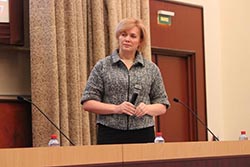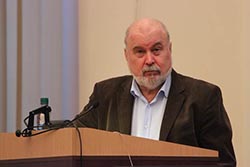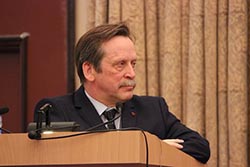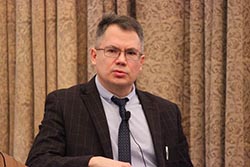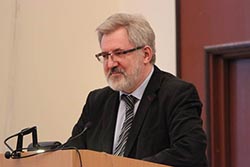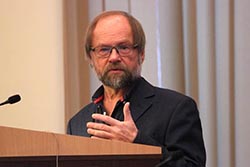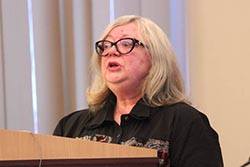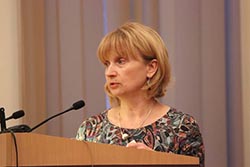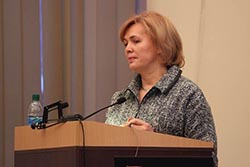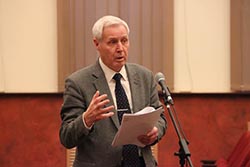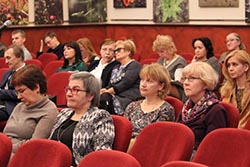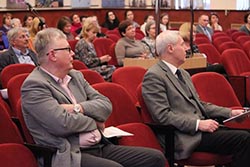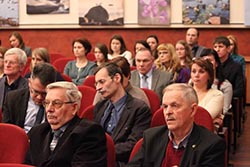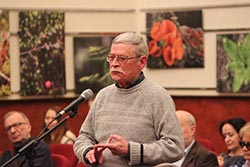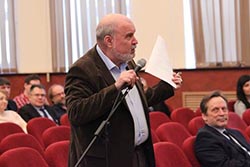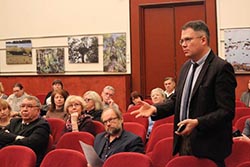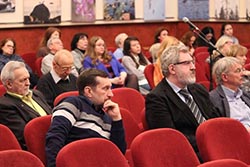The speakers highlighted the key scientific results achieved by the staff of KarRC RAS institutes and pinpointed some problems in the organization of research arising from the lack of funding for the purchase and maintenance of costly equipment, fieldwork, support to young scientists, etc. Discussions following the presentations stressed the need for the staff to more actively publish their works, especially in journals listed in international databases, and to advertise the scientific results and achievements through mass media.
RAS Corr. Fellow O.N. Bakhmet told about the work of the Department of Multidisciplinary Scientific Research and emphasized the demand for promoting new promising areas of interdisciplinary research and for closer networking between KarRC RAS institutes. The concluding part of the meeting was devoted to a discussion of the current problems and possible lanes for the development of the Karelian Research Centre RAS, as well as plans for 2018.
News

January 26, 2018
On January 25, 2018 KarRC RAS Learned Council had a meeting devoted to the key outcomes of the scientific and administrative activities of KarRC RAS scientific institutes in 2017. Reports about the work of their respective institutes were presented by: Dr. V.A. Ilyukha (Acting Director of the Institute of Biology), Dr. D.A. Subetto (Acting Director of the Northern Water Problems Institute), Dr. S.A. Svetov (Acting Director of the Institute of Geology), Dr. A.M. Kryshen’ (Acting Director of the Forest Research Institute), Dr. V.V. Mazalov (Acting Director of the Institute of Applied Mathematical Research), Dr. T.V. Morozova (Acting Director of the Institute of Economics), Dr. O.P. Ilyukha (Acting Director of the Institute of Linguistics, Literature and History).
See also:
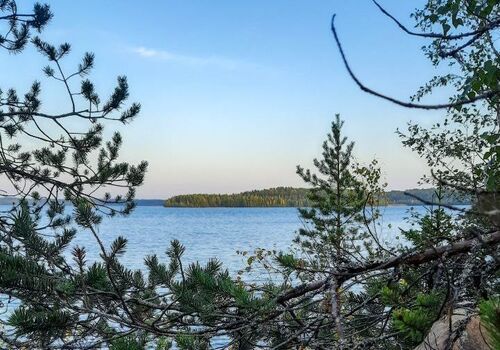
July 7, 2025
A successful introduction: the zander has settled down in Lake Sundozero and continues to spread
Scientists of the Institute of Biology KarRC RAS have published the results of long-term observations over the population of the zander (or pikeperch) introduced to Lake Sundozero more than a half-century ago. They confirm the species has become naturalized. Maintaining the population requires regulation of harvesting, protection during spawning, and tending of spawning grounds.
Scientists of the Institute of Biology KarRC RAS have published the results of long-term observations over the population of the zander (or pikeperch) introduced to Lake Sundozero more than a half-century ago. They confirm the species has become naturalized. Maintaining the population requires regulation of harvesting, protection during spawning, and tending of spawning grounds.
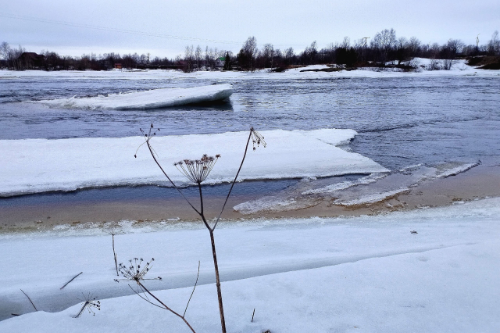
June 26, 2025
Ice-related phenomena on rivers emptying into the White Sea now last three weeks less than 60 years before
Ice on northern rivers now forms later while ice-off occurs earlier. Karelian scientists confirmed this having analyzed 64 years of marine and meteorological data from the estuaries of rivers draining into the White Sea along its western coast. Climate change has bit three weeks off the ice-covered period on these rivers. The reductions have been the most significant in the last 30 years, aligning with global warming trends in Arctic water bodies.
Ice on northern rivers now forms later while ice-off occurs earlier. Karelian scientists confirmed this having analyzed 64 years of marine and meteorological data from the estuaries of rivers draining into the White Sea along its western coast. Climate change has bit three weeks off the ice-covered period on these rivers. The reductions have been the most significant in the last 30 years, aligning with global warming trends in Arctic water bodies.

June 23, 2025
Citizen science and web technologies help researchers study insects of Karelia
More than 30 insect species not encountered in Karelia previously have been revealed by entomologists from KarRC RAS during their expeditions and using data communicated by active participants of the iNaturalist portal – an open platform for collecting biodiversity data.
More than 30 insect species not encountered in Karelia previously have been revealed by entomologists from KarRC RAS during their expeditions and using data communicated by active participants of the iNaturalist portal – an open platform for collecting biodiversity data.




